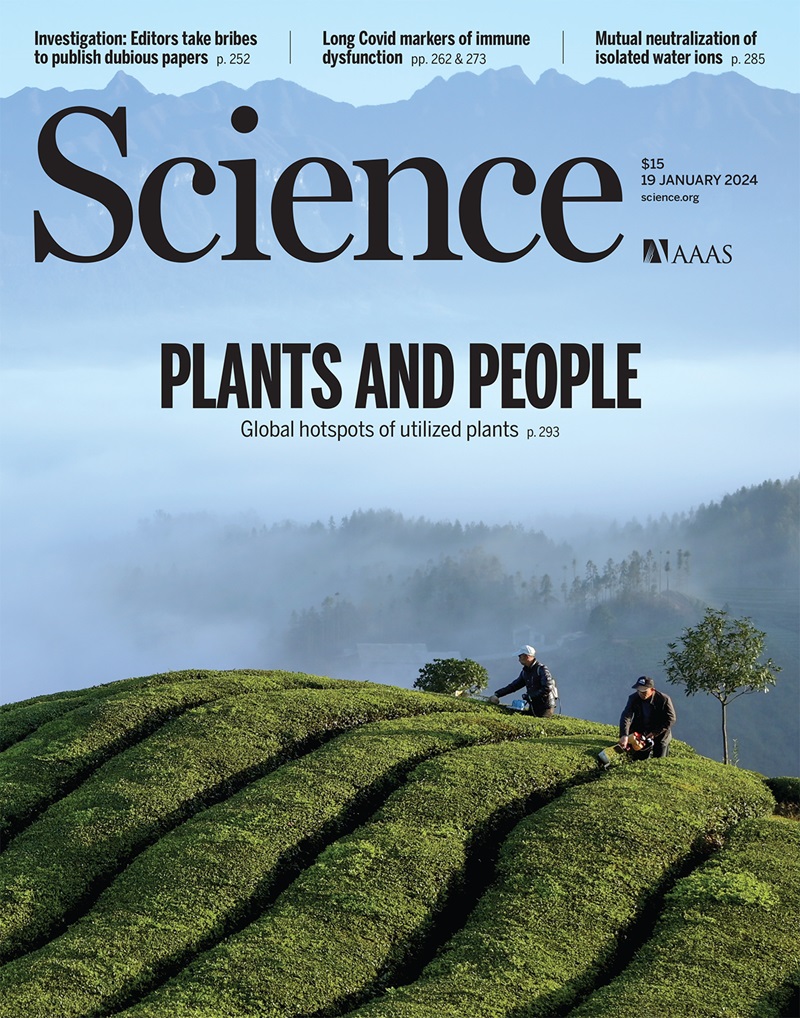翻译延伸的改变是鳉鱼大脑衰老的关键标志
IF 45.8
1区 综合性期刊
Q1 MULTIDISCIPLINARY SCIENCES
引用次数: 0
摘要
衰老是神经退行性疾病的主要危险因素,具有多种细胞和分子特征。为了了解这些特征的起源,我们研究了衰老对短命鳉鱼大脑中转录组、翻译组和蛋白质组的影响。我们确定了一系列事件,其中异常翻译暂停导致独立于转录调节的蛋白质丰度改变。特别是,衰老导致核糖体失速增加和富含碱性氨基酸的蛋白质的广泛消耗。这些发现揭示了衰老大脑生物学中潜在的脆弱点——基本DNA和RNA结合蛋白的生物发生。这种脆弱性可能代表了一个统一的原则,它连接了各种衰老特征,包括基因组完整性、蛋白质平衡和大分子的生物合成。本文章由计算机程序翻译,如有差异,请以英文原文为准。

Altered translation elongation contributes to key hallmarks of aging in the killifish brain
Aging is a major risk factor for neurodegeneration and is characterized by diverse cellular and molecular hallmarks. To understand the origin of these hallmarks, we studied the effects of aging on the transcriptome, translatome, and proteome in the brain of short-lived killifish. We identified a cascade of events in which aberrant translation pausing led to altered abundance of proteins independently of transcriptional regulation. In particular, aging caused increased ribosome stalling and widespread depletion of proteins enriched in basic amino acids. These findings uncover a potential vulnerable point in the aging brain’s biology—the biogenesis of basic DNA and RNA binding proteins. This vulnerability may represent a unifying principle that connects various aging hallmarks, encompassing genome integrity, proteostasis, and the biosynthesis of macromolecules.
求助全文
通过发布文献求助,成功后即可免费获取论文全文。
去求助
来源期刊

Science
综合性期刊-综合性期刊
CiteScore
61.10
自引率
0.90%
发文量
0
审稿时长
2.1 months
期刊介绍:
Science is a leading outlet for scientific news, commentary, and cutting-edge research. Through its print and online incarnations, Science reaches an estimated worldwide readership of more than one million. Science’s authorship is global too, and its articles consistently rank among the world's most cited research.
Science serves as a forum for discussion of important issues related to the advancement of science by publishing material on which a consensus has been reached as well as including the presentation of minority or conflicting points of view. Accordingly, all articles published in Science—including editorials, news and comment, and book reviews—are signed and reflect the individual views of the authors and not official points of view adopted by AAAS or the institutions with which the authors are affiliated.
Science seeks to publish those papers that are most influential in their fields or across fields and that will significantly advance scientific understanding. Selected papers should present novel and broadly important data, syntheses, or concepts. They should merit recognition by the wider scientific community and general public provided by publication in Science, beyond that provided by specialty journals. Science welcomes submissions from all fields of science and from any source. The editors are committed to the prompt evaluation and publication of submitted papers while upholding high standards that support reproducibility of published research. Science is published weekly; selected papers are published online ahead of print.
 求助内容:
求助内容: 应助结果提醒方式:
应助结果提醒方式:


